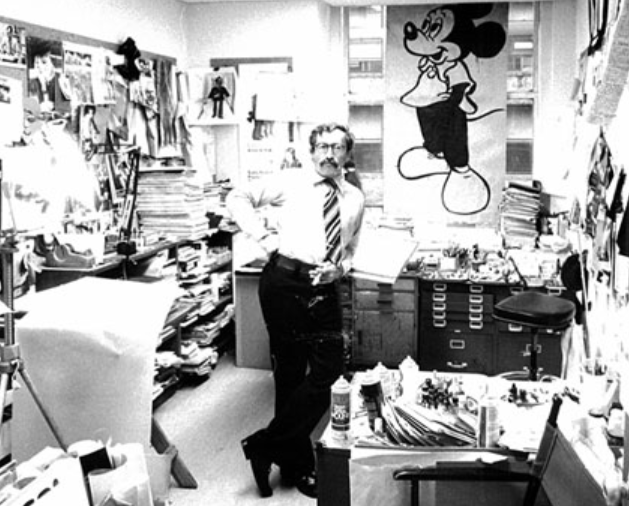Paul Crifo, an artist best known for creating iconic film posters over a career that lasted more than 40 years, has died.
A resident of the Roslyn area for 60 years, Crifo died at 98 on Sept. 22 of natural causes, according to his son Peter.
Born in New York City on Jan. 11, 1922, Crifo studied illustration at Pratt University in Brooklyn, and began his career as an artist’s apprentice before joining 20th Century-Fox’s New York City office as an in-house designer.
In the early 1950s, he joined Diener/Hauser/Bates, a theatrical advertising powerhouse in Manhattan, where Crifo rose through the ranks from designer to senior art director-vice president. In his years at the agency, he created print campaigns for Metro Goldwyn Mayer, United Artists, Fox, Paramount, independent film companies, foreign film distributors, Broadway productions and the New York Racing Association.
From 1942 through 1986, Crifo worked on over 400 motion picture advertising campaigns and had a hand in creating more than 120 film posters.
During his career, Crifo illustrated 45 film posters of his own design, including for Mel Brooks’ “The Producers,” the comedy classic “Monty Python and the Holy Grail,” the war epic “A Bridge Too Far,” and the 1967 winner of the Academy Award for Best Picture, “In the Heat of the Night.”
His photography-based posters include the Robert Redford-starring “The Great Gatsby,” and the John Travolta vehicle “Urban Cowboy.” Crifo also collaborated with colleagues and illustrators in the design of posters for the Steve McQueen action film “The Great Escape,” the 1971 Best Picture winner “The French Connection” and the thriller “Marathon Man.” He also contributed uncredited original design work for the first four James Bond films.
Graphic artist, actor and director Pete Handelman first met Crifo through his son Peter, when the two were working together at a Manhattan ad agency in the early 1990s. One night while hanging out at Crifo’s son’s apartment, Handelman was shown some of his father’s original sketches.
“I was just bowled over by these effortless, incredibly stylish compositions,” Handelman said in a phone interview.
He later met Crifo himself, who he says was “charming and funny.”
“I was aware through Peter that Mr. Crifo had designed movie posters, but seeing those conceptual illustrations sparked a curiosity to see more and learn more about Paul,” Handelman said. “And once Peter began to share more details about his dad, I was determined to tell Paul’s story.”
Together with Peter Crifo, Handelman directed the documentary “Mr. Movie Poster,” a feature-length look at Crifo’s design career which he says will be released soon.
“He was always accessible and cooperative when it came to making the film but also definitely a reserved, quiet guy,” Handelman said. “I think that was part of what allowed him to immerse himself in his work.”
In his lifetime, Crifo’s work was recognized by the Society of Illustrators, the Art Directors Club of New York and the Advertising Club of New York. In 2007 he was recognized for his contribution to poster design at the Hollywood Reporter’s Key Art Awards in Los Angeles. The largest show of his work, called “The Art of the Movie Poster,” was held at the Academy of Motion Picture Art & Sciences in Beverly Hills, California, in 2009.
Handelman notes that unlike his fellow artists, Crifo rarely signed his work.
“He just had no ego whatsoever about his accomplishments and legacy,” Handelman said. “Peter talks in the film about how Paul was really one of a small, exclusive group of movie poster designers during the time in which you worked, but he really flew under the radar. I think that was because of his modesty.”
He adds that Crifo was a “true craftsman” in a time before technology took the forefront of design and illustration.
“What I admire is the individual, someone who could do it all graphically with a pencil, chalk, paint, cutouts, glass, whatever,” Crifo told trade paper Variety in 2009. “Today, you’re stuck in the computer.”
“Not to overly criticize the digital age, that brings a lot of advantages, but we’ve lost the illustrative side of things,” Handelman said. “Paul was a craftsman. He represented another time and age that has sadly disappeared, you know? But what I think also makes his work so incredible was just he was so incredibly passionate about doing it as he did. And his art will always be there.”
Crifo was predeceased by his wife, Loretta, a former flight attendant, in 2008, and is survived by his sons Kevin and Peter.



